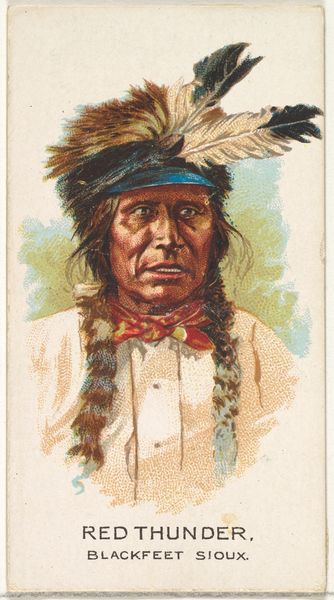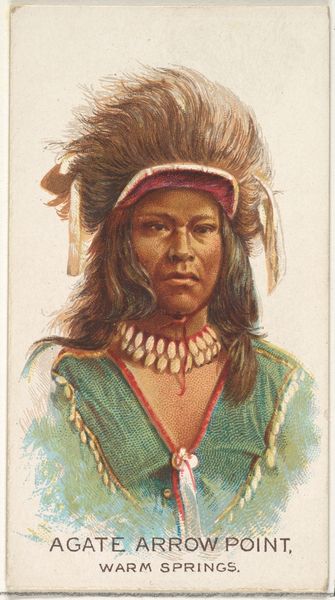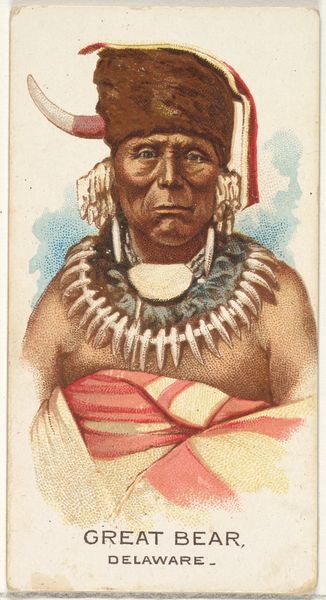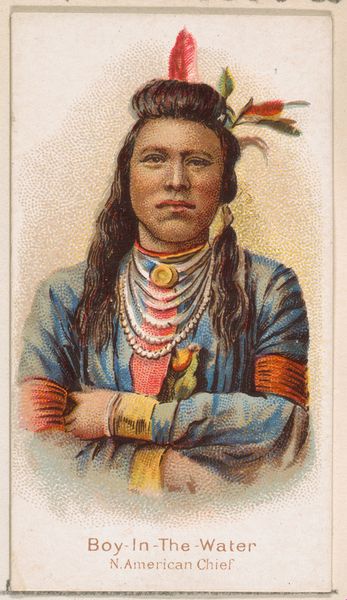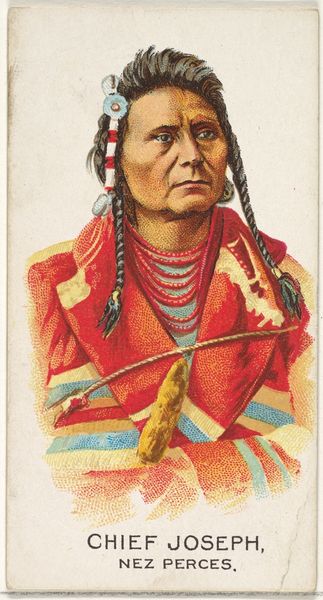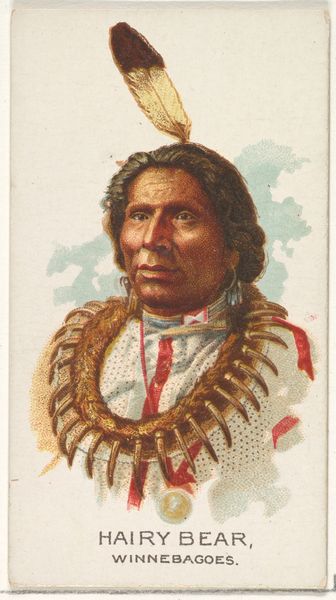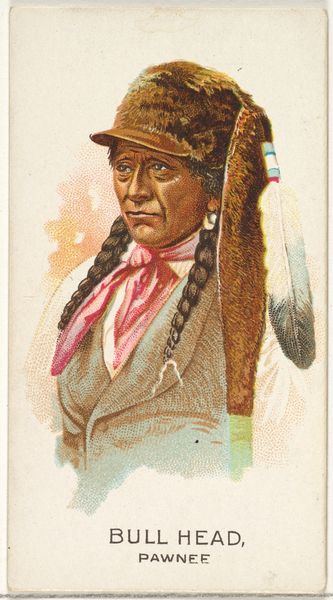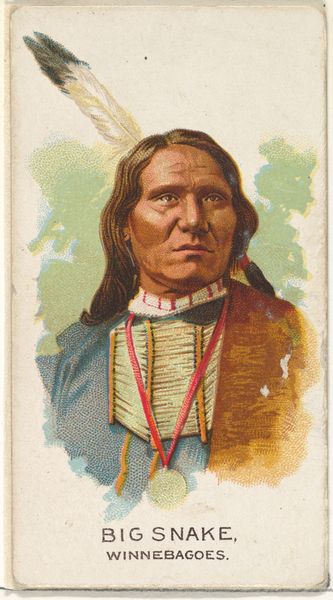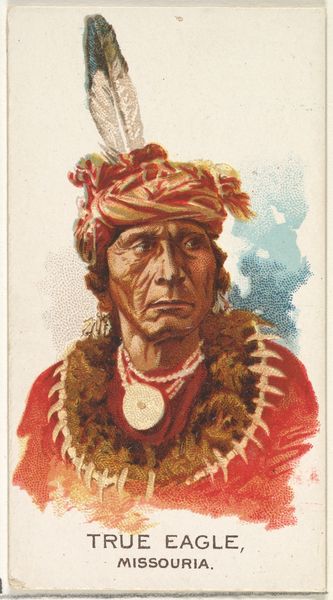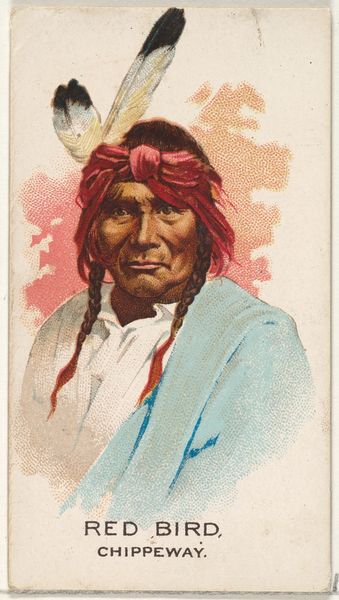
Noon Day, Chippeway, from the American Indian Chiefs series (N2) for Allen & Ginter Cigarettes Brands 1888
0:00
0:00
Dimensions: Sheet: 2 3/4 x 1 1/2 in. (7 x 3.8 cm)
Copyright: Public Domain
Curator: Right, let's dive in. This intriguing piece is "Noon Day, Chippeway," created in 1888. It's from the "American Indian Chiefs" series, printed for Allen & Ginter cigarette packs. It uses colored pencils and printmaking techniques, now housed at The Met. Editor: Whoa. My first thought? This is both mesmerizing and deeply unsettling. It has this flattened, almost graphic quality. I mean, this pose… It gives me this very eerie feeling like something isn’t quite right. Curator: The series was part of a trend to capitalize on romanticized depictions of Indigenous figures. "Noon Day, Chippeway" embodies a problematic approach, turning people into marketable commodities that erase Indigenous identity and self-determination. The caricature-like simplification contributes to the flattening and stereotyping of Native cultures. Editor: I see that now. The artist reduces "Noon Day's" rich, complex history to a pretty face on a collectible card! Curator: Precisely. The subject’s name, carelessly placed below the image, reduces him to a label, an object rather than an individual. In essence, such cultural exploitation has implications rooted in colonialism and racial biases, and this artwork perpetuates this ideology. Editor: And those eyes...it feels as if they hold all that suppressed history, all those unspoken stories and struggles of the Chippeway people and his own! I wonder if “Noon Day” ever imagined his image would be commodified this way, stripped from his story. It makes me angry! Curator: It's essential we hold this complex intersection of cultural appreciation and exploitation. As we examine the beauty of the piece, the drawing technique or aesthetic considerations, we cannot ignore its painful historical context and lasting social impact. Editor: Absolutely. Recognizing this duality—acknowledging artistic technique while remaining aware of the disturbing undertones and harmful effects – is critical for engaging ethically with art. It makes me question even what seems attractive on the surface. Curator: It serves as a crucial point of reflection, driving the audience toward a more enlightened view of identity politics. Editor: Well, seeing beyond just face value made this feel more...impactful than I thought it could. So powerful!
Comments
No comments
Be the first to comment and join the conversation on the ultimate creative platform.

